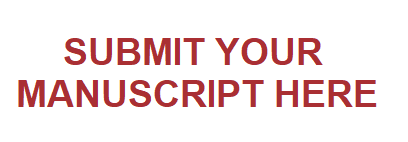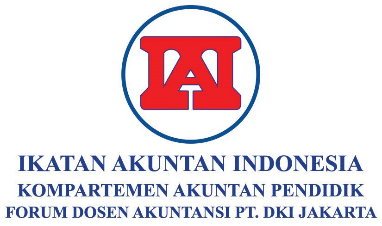Pengaruh Arus Kas Bebas, Set Peluang Investasi, dan Struktur Kepemilikan terhadap Kebijakan Dividen
DOI:
https://doi.org/10.62108/asrj.v1i1.4745Abstract
Penelitian ini dilakukan untuk mengetahui pengaruh dari arus kas bebas, set peluang investasi, kepemilikan manajerial, dan kepemilikan institusional terhadap kebijakan dividen pada perusahaan sektor non-keuangan yang terdaftar di indeks Kompas100 pada periode tahun 2018 – 2020. Menurut UU No.40 Tahun 2007, perusahaan diharuskan mencadangkan labanya dan membagikan dividen ketika laba bersih bernilai positif. Namun, kenyataannya, banyak perusahaan yang memiliki laba bersih negatif yang dapat membayarkan dividen. Kemudian, terdapat juga perusahaan yang memiliki laba bersih positif yang tidak membayarkan dividen. Hal tersebut merupakan fenomena dasar dari penelitian ini. Penelitian ini merupakan jenis penelitian kuantitatif yang menggunakan data sekunder berupa laporan keuangan dan laporan tahunan perusahaan. Metode pengambilan sampel dalam penelitian ini menggunakan purposive sampling hingga menghasilkan sebanyak 57 sampel perusahaan sektor non-keuangan. Teknik analisis data pada penelitian ini menggunakan uji pemilihan model regresi data panel, uji asumsi klasik, uji hipotesis, dan uji regresi linier berganda. Berdasarkan hasil analisis data dapat disimpulkan bahwa arus kas bebas, set peluang investasi, kepemilikan manajerial, dan kepemilikan institusional tidak memiliki pengaruh yang signifikan terhadap kebijakan dividen.
References
Adkins, L. C., Campbell, R. C., Chmelarova, V., & Carter Hill, R. (2012). The Hausman Test, and Some Alternatives, with Heteroskedastic Data (pp. 515–546). https://doi.org/10.1108/S0731-9053(2012)0000029022
Amaliah, E. N. (2020). Regresi Data Panel dengan Pendekatan Common Effect Model (CEM), Fixed Effect model (FEM) dan Random Effect Model (REM) (Studi Kasus: Persentase Penduduk Miskin Menurut Kabupaten/Kota di Kalimantan Timur Tahun 2015-2018). Esstimasi: Journal of Statistics and Its Application, 1(2), 106–115. https://doi.org/10.20956/EJSA.V1I2.10574
Aslan, H., & Kumar, P. (2012). Strategic ownership structure and the cost of debt. Review of Financial Studies, 25(7), 2257–2299. https://doi.org/10.1093/rfs/hhs062
Basuki, A. T. (2016). Analisis regresi : dalam penelitian ekonomi dan bisnis di lengkapi spss dan eviews. Jakarta: Rajawali Pers.
Benu, Y. R. (2020). Pengaruh Struktur Kepemilikan dan Faktor Keuangan terhadap Kebijakan Dividen. E-Jurnal Akuntansi, 30(10), 2641. https://doi.org/10.24843/eja.2020.v30.i10.p16
Brigham, E. F., & Houston, J. F. (2018). Dasar-dasar manajemen keuangan. Salemba Empat.
Crutchley, C. E., & Hansen, R. S. (1989). A Test of the Agency Theory of Managerial Ownership, Corporate Leverage, and Corporate Dividends. Financial Management, 18(4), 36. https://doi.org/10.2307/3665795
Dina, R., & Musnadi, S. (2020). Pengaruh Struktur Kepemilikan terhadap Kebijakan Dividen pada Perusahaan Non-Keuangan di Bursa Efek Indonesia. Jurnal Ilmiah Mahasiswa Ekonomi Manajemen, 4(4), 662–674. http:jim.unsyiah.ac.id/ekm
Endang, M. W., Suhadak, S., Saifi, M., & Firdausi, N. (2020). The Effect of Ownership Structure and Leverage Towards Dividend Policy and Corporate Values. Journal of Public Administration Studies, 5(1), 1–4. https://doi.org/10.21776/UB.JPAS.2020.005.01.1
Gaver, J. J., & Gaver, K. M. (1993). Additional evidence on the association between the investment opportunity set and corporate financing, dividend, and compensation policies. Journal of Accounting and Economics, 16(1–3), 125–160. https://doi.org/10.1016/0165-4101(93)90007-3
Ghozali, I. (2018). Aplikasi Analisis Multivariate dengan Program IBM SPSS 25. Badan Penerbit Universitas Diponegoro.
Hartono, J. (2016). Teori Portofolio dan analisis Investasi (10th ed.). BPFE UGM.
Ifadah, A. Z., & Witiastuti, R. S. (2021). Investment opportunity set and dividend policy in Malaysia. Management Analysis Journal, 10(2), 212–222.
Jacub, R., & Laksono, F. (2012). Pengaruh Pelayanan dan Harga Sparpart Terhadap Kepuasan Pelanggan Studi Kausal Bengkel Cahaya Motor Yamaha-Jakarta. 10(1), 1–16.
Jensen, M. C. (1986). Flow, Agency Costs of Free Cash Corporate
Finance, and Takeovers. American Economic Review, 76(2), 323–329.
Jensen, M. C., & Meckling, W. H. (1976). Theory Of The Firm: Managerial Behaviour, Agecny Costs and Ownership Structure. Journal of Financial Economics, 3, 305–360.
Lajar, S. N. (2021). Pengaruh CG yang Terkait Kepemilikan Saham, Likuiditas, Kebijakan Utang, dan Profitabilitas Terhadap Kebijakan Dividen Pada Perusahaan Pertambangan. Jurnal Ilmu Ekonomi, Sosial Dan Pendidikan, 1(2), 55–71. https://jiesp.ppak-atmajaya.com/ojsjiesp/index.php/JIESP/article/view/4
Lintner, J. (1956). Distribution of Incomes of Corporations Among Dividends, Retained Earnings, and Taxes. The American Economic Review, 46(2), 97–113. https://www.jstor.org/stable/1910664
Mardani, R. (2021). T Hitung Negatif, Bukan Berarti Tidak Signifikan. MJurnal Solusi Bisnis Anda. https://mjurnal.com/skripsi/t-hitung-negatif-signifikan/
Mardasari, R. B. (2014). Pengaruh Insider Ownership, Kebijakan Hutang Dan Free Cash Flow Terhadap Nilai Perusahaan Melalui Kebijakan Dividen. Jurnal Ilmu Manajemen, vol 2(nomor 4), hal 1807-1820.
Michell Suharli. (2007). PENGARUH PROFITABILITY DAN INVESTMENT OPPORTUNITY SET TERHADAP KEBIJAKAN DIVIDEN TUNAI DENGAN LIKUIDITAS SEBAGAI VARIABEL PENGUAT (Studi pada Perusahaan yang Terdaftar di Bursa Efek Jakarta. Jurnal Akuntansi Dan Keuangan, 9(1), 9–17. http://puslit2.petra.ac.id/ejournal/index.php/aku/article/view/16811
Moin, A., Guney, Y., & El Kalak, I. (2020). The effects of ownership structure, sub-optimal cash holdings and investment inefficiency on dividend policy: evidence from Indonesia. In Review of Quantitative Finance and Accounting (Vol. 55, Issue 3). Springer US. https://doi.org/10.1007/s11156-019-00862-z
Mollah, S. (2011). Do emerging market firms follow different dividend policies? Studies in Economics and Finance, 28(2), 118–135. https://doi.org/10.1108/10867371111137120
Myers, S. C. (1977). Determinants of corporate borrowing. Journal of Financial Economics, 5(2), 147–175. https://doi.org/10.1016/0304-405X(77)90015-0
Nazariah, M. (2020). Pengaruh Pengumuman Dividen Terhadap Perubahan Harga Saham Sebelum Dan Sesudah Ex-Dividen Date Pada Perusahaan Lq45 Yang Tercatat Di Bursa Efek Indonesia Periode 2014-2018. Jurnal Sains Riset, 10(1), 67–73. https://doi.org/10.47647/jsr.v10i1.220
Norfai. (2020). Manajemen Data Menggunakan SPSS. Universitas Islam Kalimantan, Juli, 70.
Nuraini, Mardiyati, & Ahmad. (2020). Pengaruh Free Cash Flow Profitabilitas Asset Growth Likuiditas Leverage Terhadap Kebijakan Dividen Pada Perusahaan Manufaktur Yang Terdaftar Di BEI Periode 2014-2018. Jurnal Bisnis, Manajemen, Dan Keuangan, 1(2), 374–385. http://103.8.12.68/index.php/jbmk/article/view/100
Pirzada, K., Mustapha, M. Z. Bin, & Wickramasinghe, D. (2015). Firm Performance, Institutional Ownership and Capital Structure: A Case of Malaysia. Procedia - Social and Behavioral Sciences, 211, 170–176. https://doi.org/10.1016/J.SBSPRO.2015.11.025
Roos, N. M., & Manalu, E. stefany. (2019). Pengaruh kepemilikan manajerial, kepemilikan institusional, dan kesempatan investasi terhadap kebijakan dividen dengan likuiditas sebagai variabel moderasi. Journal of Accounting and Business Studies, 4(1), 24–39.
Ross, S. A., Westerfield, R., & Jordan, B. D. (2000). Fundamentals of corporate finance (5th ed). Irwin McGraw-Hill.
Sari, N. L. P. P., & Budiartha, I. K. (2016). Pengaruh Investment Opportunity Set (IOS) pada Dividen Tunai dengan Umur Perusahaan sebagai Variabel Pemoderasi. E-Jurnal Ekonomi Dan Bisnis Universitas Udayana, 5, 1335–1358.
Shleifer, A., & Vishny, R. W. (1989). Management entrenchment: The case of manager-specific investments. Journal of Financial Economics, 25(1), 123–139. https://doi.org/10.1016/0304-405X(89)90099-8
Suartawan, I. G. N. P. A., & Yasa, G. W. (2017). Pengaruh Investment Opportunity Set dan Free Cash Flow Pada Kebijakan Dividen dan Nilai Perusahaan. Jurnal Ilmiah Akuntansi Dan Bisnis, 63. https://doi.org/10.24843/jiab.2016.v11.i02.p01
Sudana, I. M. (2015). Teori & Praktik Manajemen Keuangan Perusahaan Edisi 2 (2nd ed.). Erlangga.
Sugiarto, M. (2011). Pengaruh Struktur Kepemillkan Dan Kebijakan Dividen Terhadap Nilai Perusahaan Dengan Kebijakan Hutang Sebagai Intervening. Jurnal Akuntansi Kontemporer, 3(1), 1–25. https://doi.org/10.33508/JAKO.V3I1.445
Sugiyanto. (2020). Intellectual Capital And Earning Management, To Future Stock Return (Study of Mining Companies in Indonesia Listed on IDX for the Period of 2014-2019). ICoMS2020, 1(1), 1–9.
Sugiyanto, S., Kartolo, R., & Maddinsyah, A. (2021). Intervining Debt Policy The Effect Free Cash Flow And Investment Opportunity Set To Dividend Policy. Scientific Journal of Reflection : Economic, Accounting, Management, Business, 4(3), 642–652.
Sugiyono. (2012). Metode penelitian kuantitaif kualitatif dan R&D. Alfa beta.
Sulindawati, N. L. G. E., Yuniarta, G. A., & Purnamawati, I. G. A. (2018). Manajemen Keuangan : Sebagai Dasar Pengambilan Keputusan Bisnis (2nd ed.). Rajawali Pers.
Sutrisno. (2012). Manajemen Keuangan: Teori, Konsep dan Aplikasi. Ekonisia. https://www.belbuk.com/manajemen-keuangan-teori-konsep-dan-aplikasi-p-21055.html
Tandelilin, E. (2010). Portofolio dan Investasi: Teori dan Aplikasi (1st ed.). Kanisius. https://openlibrary.telkomuniversity.ac.id/home/catalog/id/10002/slug/portofolio-dan-investasi-teori-dan-aplikasi.html
Wahjudi, E. (2019). Factors affecting dividend policy in manufacturing companies in Indonesia Stock Exchange. Journal of Management Development, 39(1), 4–17. https://doi.org/10.1108/JMD-07-2018-0211
Widarjono, A. (2018). Ekonometrika Pengantar dan Aplikasinya Disertai Panduan EViews + CD Edisi Kelima (5th ed.). UPP STIM YKPN.
Widodo. (2017). Metode Penelitian : Populer & Praktis. In PT. RajaGrafindo Persada (1st ed.). Rajawali Pers.
Widyasti, I. G. A. V., & Putri, I. G. A. M. A. D. (2021). The Effect of Profitability , Liquidity , Leverage , Free Cash Flow , and Good Corporate Governance on Dividend Policies ( Empirical Study on Manufacturing Companies Listed in Indonesia Stock Exchange 2017-2019 ). American Journal of Humanities and Social Sciences Research (AJHSSR), 5(1), 269–278. www.ajhssr.com
Downloads
Published
Issue
Section
License
Copyright (c) 2022 Accounting Student Research Journal

This work is licensed under a Creative Commons Attribution 4.0 International License.
Authors who publish with this journal agree to the following terms:
- Authors retain copyright and grant the journal right of first publication with the work simultaneously licensed under a Creative Commons Attribution 4.0 International License that allows others to share the work with an acknowledgment of the work's authorship and initial publication in this journal.
- Authors can enter into separate, additional contractual arrangements for the non-exclusive distribution of the journal's published version of the work (e.g., post it to an institutional repository or publish it in a book), with an acknowledgment of its initial publication in this journal.
- Authors are permitted and encouraged to post their work online (e.g., in institutional repositories or on their website) before and during the submission process, as it can lead to productive exchanges, as well as earlier and greater citation of published work.

This work is licensed under a Creative Commons Attribution 4.0 International License.














